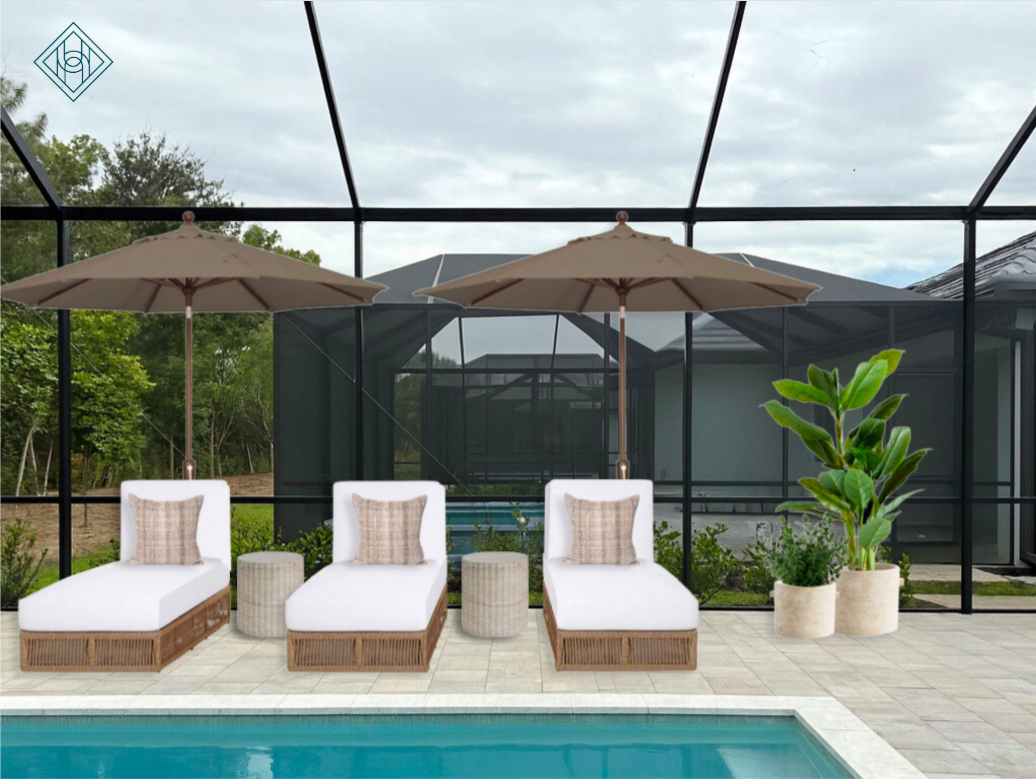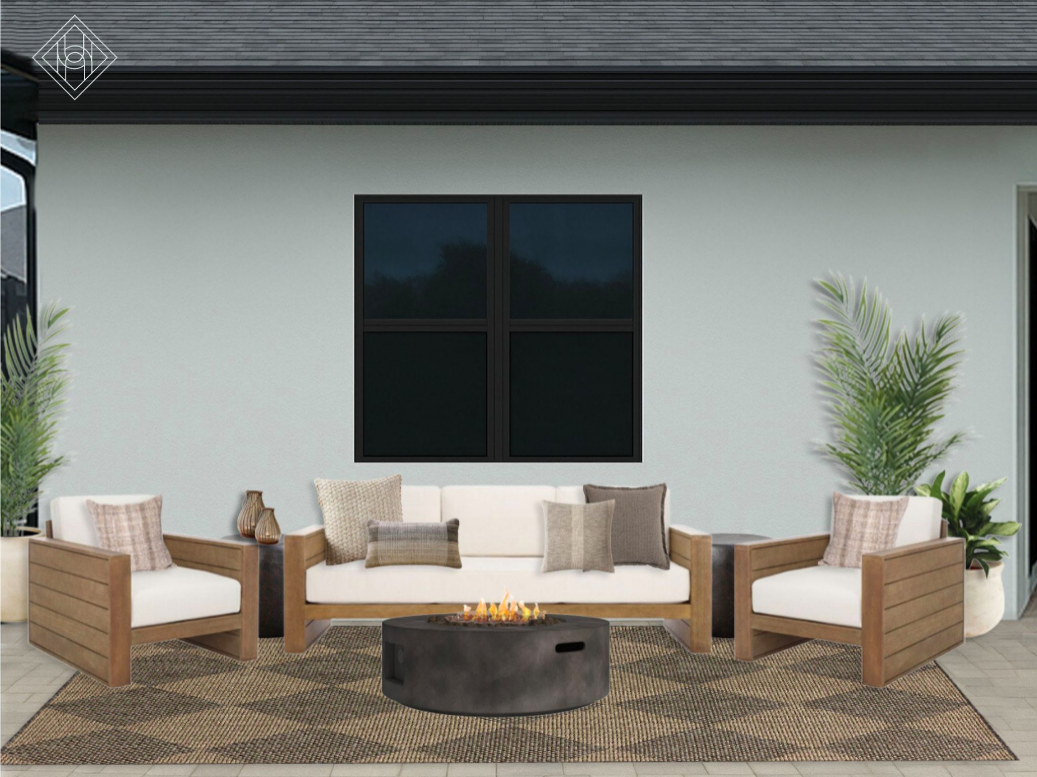How to Design a Cohesive Outdoor Space That Feels Like an Extension of Your Home
Start with a Unified Color and Material Palette
The easiest way to create cohesion between indoor and outdoor spaces is to carry your home’s color and material palette outside. In this design, warm wood tones, soft neutrals, and woven textures mirror what you might find in a modern living room — just reimagined for the outdoors.
The neutral wood sofa, woven dining chairs, and beige planters bring warmth and familiarity, while stone finishes on the outdoor kitchen and faux wood ceiling panels add architectural depth. Keeping materials consistent (wood, rattan, linen, and stone) ensures your patio feels connected to your home’s style rather than competing with it.
Designer Tip: When selecting outdoor furniture, look for finishes that echo what you already have inside — like light oak tones, matte black accents, or soft ivory cushions. Repetition is what makes the transition feel seamless.
Layer Neutrals with Texture and Pattern
One common mistake in outdoor design is stopping at beige. Neutrals alone can feel flat, but when layered intentionally, they create a luxurious and inviting look.
This design layers a patterned outdoor rug beneath neutral seating, introducing subtle contrast and visual depth. Textural pieces like woven chaise lounges and rope-detailed chairs prevent the space from feeling one-note. The mix of fabrics, fibers, and finishes is what makes neutrals look high-end and effortless.
Pro Tip: Think of your outdoor space like an outfit — every piece should add a different texture. Combine smooth ceramic planters, rough woven fibers, soft cushions, and matte finishes for dimension and comfort.
Create Distinct Zones for Living, Dining, and Lounging
To make your outdoor space feel like an extension of your home, it should serve multiple functions — just like your interior does. This design defines three clear zones:
The Lounge Area: Centered around a concrete fire pit and patterned rug, this zone feels cozy and conversational.
The Dining Area: Featuring a natural wood dining table and woven chairs, it mirrors an indoor dining room but with durable, weather-friendly materials.
The Poolside Retreat: The chaise lounges with brown umbrellas add resort-inspired comfort and balance the layout visually.
Each zone uses consistent materials and tones to stay cohesive, while subtle distinctions in rug pattern and furniture shape help define purpose.
Designer Tip: Use outdoor rugs or planters to visually separate zones. Even in smaller spaces, defining areas helps the space feel intentional and well-designed.
Add Finishing Touches That Blur the Lines
The key to making your outdoor area feel like part of your home lies in the details — the finishing touches that make it feel styled rather than staged.
Planters: Neutral beige pots filled with greenery bring softness and life to structured layouts.
Lighting: A black ceiling fan with integrated light ties into indoor fixtures while adding function and comfort.
Accessories: Layered throw pillows in mixed neutrals mimic interior styling while still being practical for outdoor use.
Even small touches like a side table for drinks or woven lanterns for evening ambiance help bridge the gap between outdoor practicality and indoor comfort.
Pro Tip: Repeat at least three accent materials or colors throughout the space — for example, the black accents of the fan, fire pit, and planters — to tie everything together.



